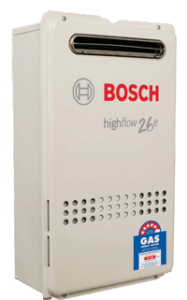Star Ratings for Gas Hot Water Heater Systems
Gas hot water heater systems in Australia are all tested and labelled for energy efficiency Star Ratings.
Understanding what they mean can save you money!
What do the Ratings Mean?
Star ratings were developed to provide consumers with an easy way of comparing the energy efficiency of different models.
But what do these ratings really mean and how do you use the information?
Please see How to Switch to LPG Hot Water for Your Home
The Test Benchmark
 The Star Rating is based on the amount of energy input required to raise the temperature of 200 litres of water from 15°C to 60°C.
The Star Rating is based on the amount of energy input required to raise the temperature of 200 litres of water from 15°C to 60°C.Why 60°C?
What is the Difference Between Each Star?
|
Gas Hot Water Heater Star Ratings & Annual Energy Consumption
|
||||||
|
Star Rating
|
1.0
|
2.0
|
3.0
|
4.0
|
5.0
|
6.0
|
|
MJ/Year
|
28900
|
26877
|
24854
|
22831
|
20808
|
18785
|
You will also see some hot water heaters on the market that claim to be approaching 7 Stars.
This is possible because the industry technology has outpaced the labelling provisions.
Combustion Efficiency
Star ratings encapsulate both a start-up heat up factor for each appliance and combustion efficiency.
As a result, combustion efficiency for each star rating can vary a bit.
However, if we look at combustion efficiency in isolation, it does make it a bit easier to understand what it all means.
The following are all approximate but will give you a good idea what to expect based on what star rating you choose:
4 Star = 73%
5 Star = 80%
6 Star = 87%
7 Star = 94%
How Do You Use This information?
Assuming you use the 200L per day of hot water from the test criteria, upgrading from a 3 Star Rated water heater to a 5 Star Rated water heater would save you about 16% or 4046MJ per year.
As one 45kg gas bottle contains approximately 2200MJ of energy, you would be saving close to two bottles of gas per year.
The Table May Be Overstated
However, we believe the 200L hot water consumption number is much higher than actual average use.
The table above shows the annual gas consumption at 20808MJ, or just over 9 bottles per year, for a 5 Star system. This is more than double the real world numbers.
Real World Data Shows Much Less Consumption
Actual Elgas data shows that our average hot water customer, in reality, uses just under 4 gas bottles per year.
This is important because it means that the 16% savings equates to a bit over ½ a gas bottle, not 2 bottles.
We share this because we think it is important that we don’t knowingly communicate savings that we recognise as overstated.
Of course, these are all only estimates and results will vary based on actual hot water consumption, climate, unit model and temperature setting.
Combination of Purchase Price & Operating Cost
We hope this information helps you make a more informed decision when buying your next gas hot water system.
Just remember that you need to consider both the purchase price and the cost to operate the water heater when making a decision.
Please also remember that the more efficient the water heater, the smaller your carbon footprint.
- Butane – Butane Gas – Butane Chemical Formula- Butane Gas Canister - April 23, 2025
- BBQ – Gas and Charcoal BBQ Features – Charcoal BBQ vs Gas BBQ Comparison - March 31, 2025
- GPL Gas (GPL Fuel) – GLP Gas – LPG Gasul: GLP – GPL Station Near Me - March 26, 2025

